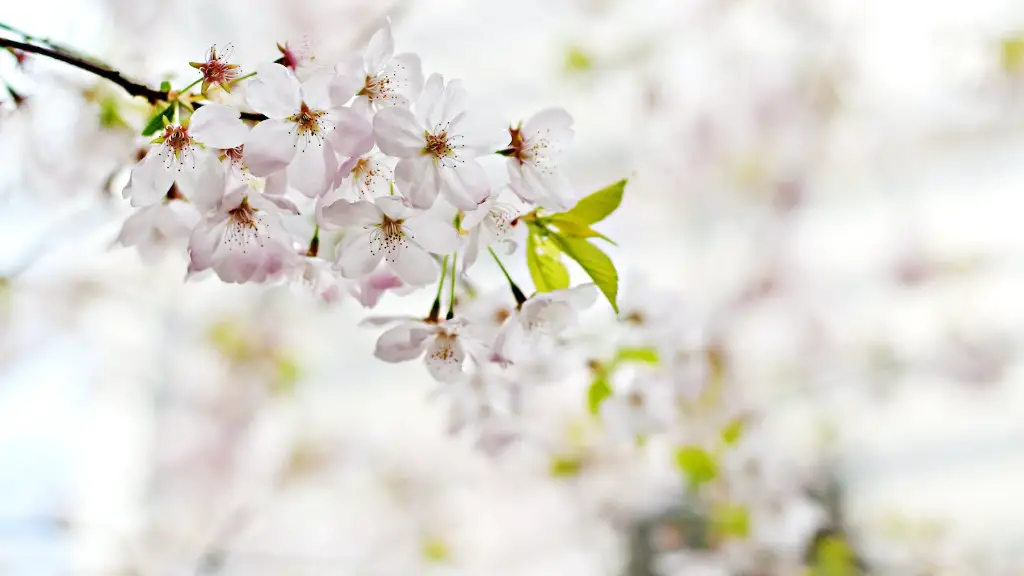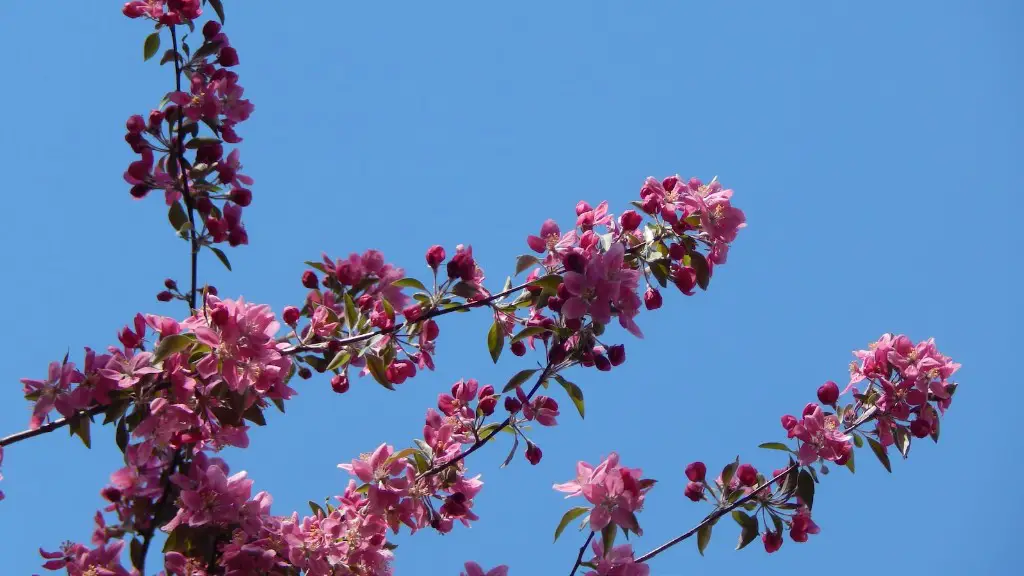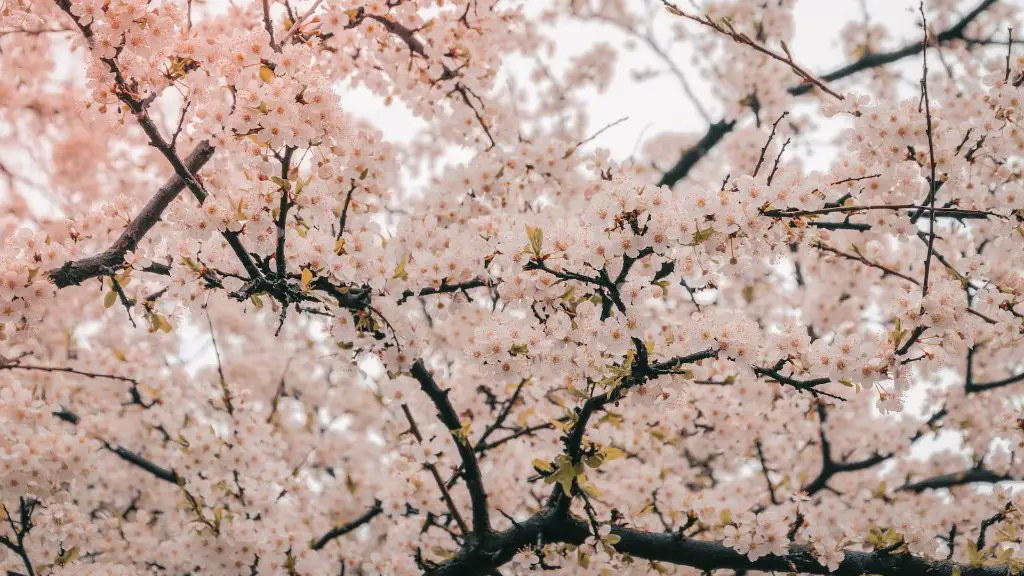Safety and Tools
Pruning a weeping cherry blossom tree can be a rewarding experience, but it is important to take safety seriously. Whenever pruning a tree, it is important to wear protective glasses and gloves and to never operate any power tool without a face shield and protective clothing. When it comes to tools, it is best to choose those that are specifically designed for pruning. Hand pruners are often ideal for removing damaged branches, as they provide greater precision than larger tools. Loppers can be helpful for thicker branches. Finally, hedge shears can be used to trim the top and sides of a tree.
Selecting What and Where to Prune
Before pruning a weeping cherry blossom tree, it is important to carefully examine the branches and determine which need to be removed. Generally speaking, pruning should be done when the tree is in a dormant period—before it begins to leaf out in the spring. When looking for a branch to prune, try to identify dead, diseased or crossing branches. Any branch that is intersecting another branch is a good candidate for removal, as it can impede growth and air circulation. In addition, it is important to prune branches back to their point of origin or to the next outward facing bud.
How to Prune a Weeping Cherry Blossom Tree
The first step when it comes to pruning a weeping cherry blossom tree is to identify the mature wood—these are the older branches with larger, darker bark. Pruning should only be done on these branches, as this is where new leaves and flowers will bloom. Begin by removing dead or damaged wood, then begin removing any branches that are competing with each other, or are growing in the wrong direction. When pruning branches, it should be done in a way that is consistent with the tree’s natural shape.
When pruning a weeping cherry blossom tree, it is important to make sure that there are no remaining stubs. It is also important to prune at an angle—this will help ensure that the new growth is not inhibited. Finally, once the pruning is finished, it is important to examine the tree to ensure that there are no large or dangerous limbs remaining.
Re-Pruning & Cleaning Up
Depending on the size of the tree, it may be necessary to prune the tree multiple times throughout the growing season. In order to keep the tree looking neat and tidy, it is important to regularly remove any dying or dead wood. After pruning a branch, it is important to make sure that the cut is smooth—any rough edges can attract insects and fungi. Finally, after pruning is complete, it is important to dispose of any dead wood or debris in an appropriate manner, such as by composting or burning.
Protecting the Tree
Pruning a weeping cherry blossom tree can be a time consuming and laborious process, but it pays off in the end. Pruning is beneficial to the tree, as it encourages new growth, removes unwanted branches and helps the tree look its best. After pruning is complete, it is a good idea to fertilize the tree with a fertilizer that is specifically designed for flowering trees. This will help the tree get the necessary nutrients and keep it looking healthy and vibrant.
Additional Considerations
Finally, when it comes to pruning a weeping cherry blossom tree, it is important to consider the weather and the environment. Pruning should be done on a day with mild temperatures and little wind. This will help ensure that the process goes smoothly and that any wounds sustained by the tree heal quickly. Additionally, it is important to leave a few inches of space between any branches that are trimmed, as this will help promote air circulation and reduce disease.
Alternative Pruning Methods
While it is possible to prune a weeping cherry blossom tree using hand tools, there are alternative methods that can be used, such as using a pole pruner. A pole pruner is a tool that is attached to a long, telescoping pole and can be used for trimming branches that are located up higher. This can be an easier and safer alternative to using a ladder, as it allows the user to remain safely on the ground and avoid the potential risk of falling. When using a pole pruner, it is important to make sure that the pole is securely attached and that all safety features are engaged.
Regular Maintenance
Finally, in order to make sure that the tree stays healthy, it is important to maintain a regular pruning schedule. By pruning the tree on a regular basis, it is possible to keep it looking its best while ensuring that it gets the necessary nutrients and air circulation that it needs. It is also important to keep an eye out for any diseases or pests that may be present and to take action if needed.
Determining Pruning Timing
When it comes to pruning a weeping cherry blossom tree, timing is everything. If the tree is pruned too early, it can inhibit new growth. If it is pruned too late, it can reduce its blooming potential. Generally speaking, it is best to prune the tree in late winter or early spring, as this is when it is still in a dormant period and is less susceptible to damage.
Understand Tree Growth Cycle
In order to determine the best time for pruning a weeping cherry blossom tree, it is important to understand the tree’s growth cycle. During the winter and early spring, the tree is in a dormant period, making it a good time to prune. In the summer months, the tree is actively growing, so pruning should be avoided. Additionally, it is important to understand that pruning too much can inhibit blooming and should be avoided.
Protect From Cold Temperatures
Finally, it is important to protect the tree from cold temperatures. Although pruning during the winter months is good for the tree, this should not be done if there is a risk of frost. If planting a weeping cherry blossom tree in a cold climate, it is important to make sure that the tree is protected from colder temperatures and that it is planted in a spot where it will receive plenty of sun and partial shade to avoid frost damage.


